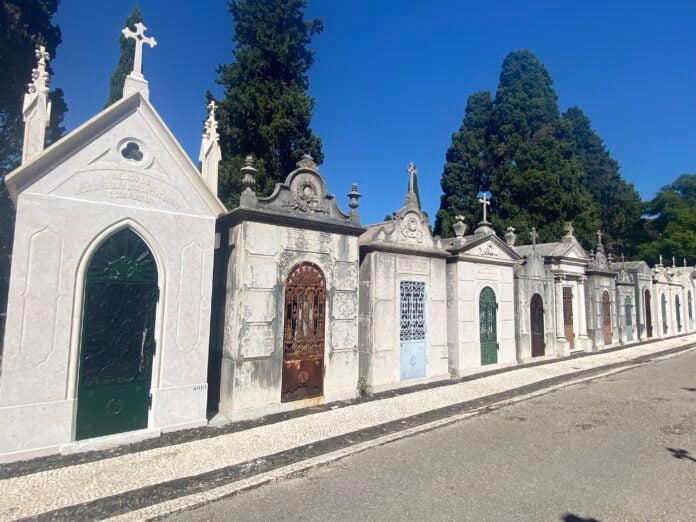Among Lisbon’s many attractions, the Prazeres Cemetery stands out as a unique and historically significant place. Considered one of the most beautiful cemeteries in the world, it is also a treasure trove of art and stories that span almost 200 years. In this article, we will take a deep dive into the Prazeres Cemetery, exploring the fascinating tales that lie within its walls.
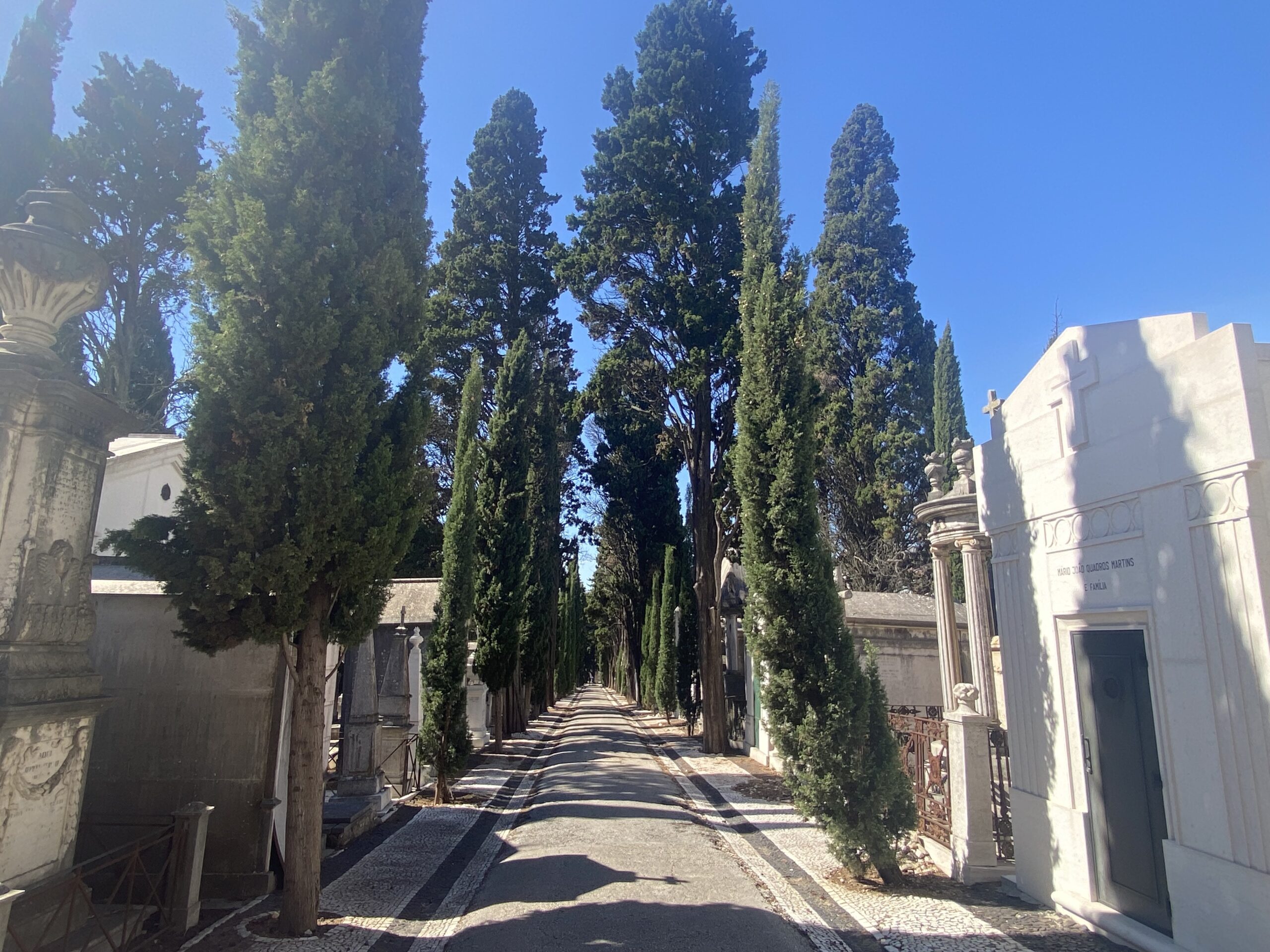
History and Location
Located in the western part of Lisbon, Prazeres Cemetery was established after cholera broke out in 1833. The name “Prazeres” translates to “Pleasures” in English. While this may seem unusual for a cemetery, it reflects the peaceful and pleasant atmosphere that envelops this burial ground. The cemetery covers almost 30 acres and is the second largest in Lisbon.
Its location offers breathtaking views of the Tagus River and the April 25 Bridge (Ponte 25 de Abril). The cemetery is arranged in a city-like grid of avenues lined with the oldest and largest concentration of cypresses on the Iberian Peninsula. There is a map available in the office.
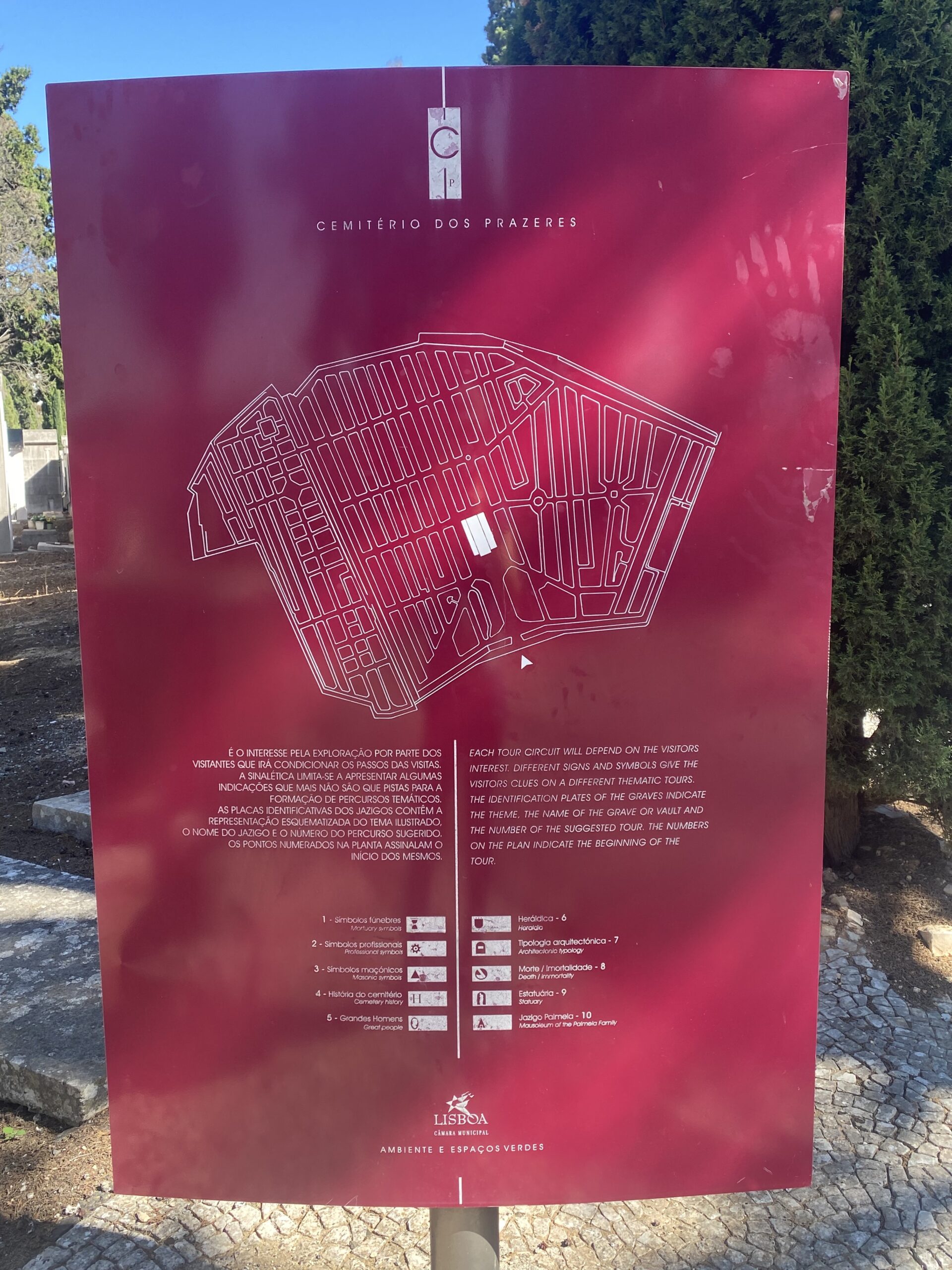
A Canvas of Artistic Expressions
What sets the Prazeres Cemetery apart from many others is its remarkable collection of sculptures, mausoleums, and tombstones. They serve as both memorials to the deceased and works of art in themselves. As you wander through the cemetery’s paths, you’ll encounter an astonishing variety of styles and motifs, ranging from neoclassical and romantic to art nouveau and art deco.
The mausoleums, in particular, are art pieces in their own right. Intricately designed and adorned with sculptures, stained glass, and elaborate decorations, these structures stand as a testament to the wealth and status of those interred within. Each mausoleum tells a unique story, reflecting the individuality of the people who found their final resting place here.
One of the impressive tombs is that of the Marquis of Valle Flôr, former owner of the palace where the Hotel Pestana Palace now operates. The architect Luigi Manini also designed the tomb of Carvalho Monteiro, the owner of the famous Quinta da Regaleira in Sintra.
The Graves of the Notable and the Ordinary
While the Prazeres Cemetery is known for its artistic treasures, it is also a place where the stories of both notable figures and ordinary citizens are preserved. As you explore the grounds, you may come across the graves of prominent Portuguese personalities, including writers, politicians, and artists.
One notable figure originally laid to rest in the Prazeres Cemetery is Fernando Pessoa, one of Portugal’s greatest poets and literary figures. His tomb was a simple, unadorned slab of stone, which reflected his enigmatic and introspective nature. Visitors would often leave handwritten notes and flowers on his grave, paying their respects to this literary giant. In 1985, after his fame grew posthumously, Pessoa was transferred to the cloister in the Jerónimos Monastery. The remains of Ofélia Queiroz, the only girlfriend Fernando Pessoa knew, are also found in Prazeres. This was interestingly only discovered after Fernando Pessoa himself was moved from Prazeres to Jerónimos.
Prazeres Cemetery was also the first home of Portugal’s most famous fado singer, Amália Rodrigues. She was eventually transferred to the National Pantheon in 2001, the first woman to be laid to rest among the greatest Portuguese figures.
It’s not just the famous who find their eternal rest here. The Prazeres Cemetery is a microcosm of Lisbon’s history, containing the stories of countless ordinary citizens who lived and loved in the city. Each tombstone represents a life lived, with its own joys and sorrows, and serves as a reminder of the passage of time and the impermanence of human existence. One of the best viewpoints around the cemetery is the section at the back of the cemetery dedicated to Lisbon’s firefighters, called “bombeiros” in Portuguese.
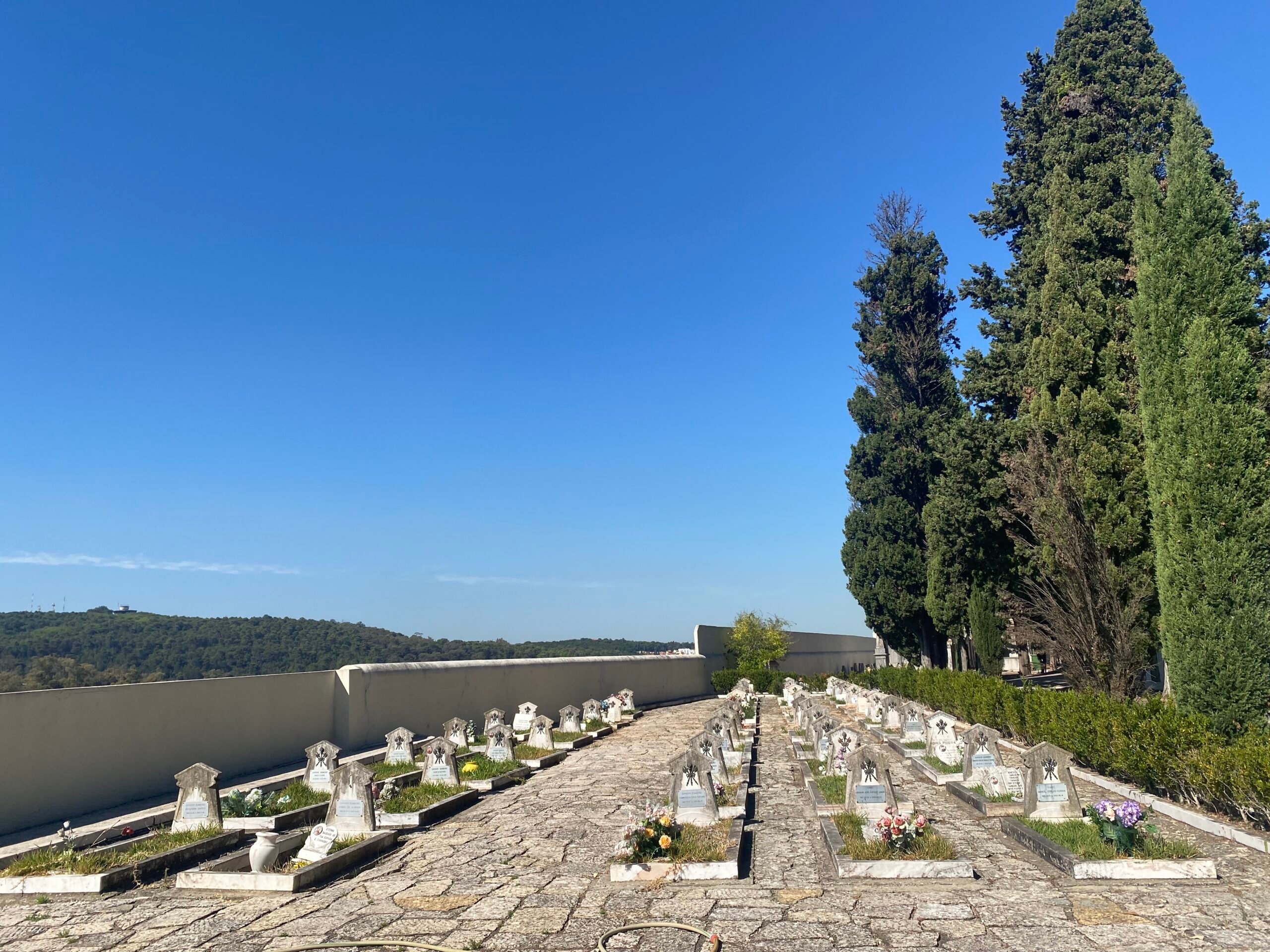
Preserving the Legacy
In recent years, efforts have been made to preserve and restore the Prazeres Cemetery, ensuring that its historical and artistic significance endures for future generations. The restoration work has included the conservation of sculptures, mausoleums, and tombstones, as well as the improvement of the cemetery’s infrastructure.
Tourism has also played a role in raising awareness about the Prazeres Cemetery. Visitors from around the world are drawn to its beauty and historical importance. Guided tours are available, offering insights into the stories behind the graves and the artistry that adorns the cemetery. These tours provide a deeper appreciation for the cultural heritage that the Prazeres Cemetery represents.
It is possible to take a self-guided tour of Prazeres by trying to decode the different symbols marking the graves throughout the cemetery. Symbols such as the hourglass (a symbol of death and immortality), heraldic shields, and masonic symbols can be found on inscriptions in front of several graves.
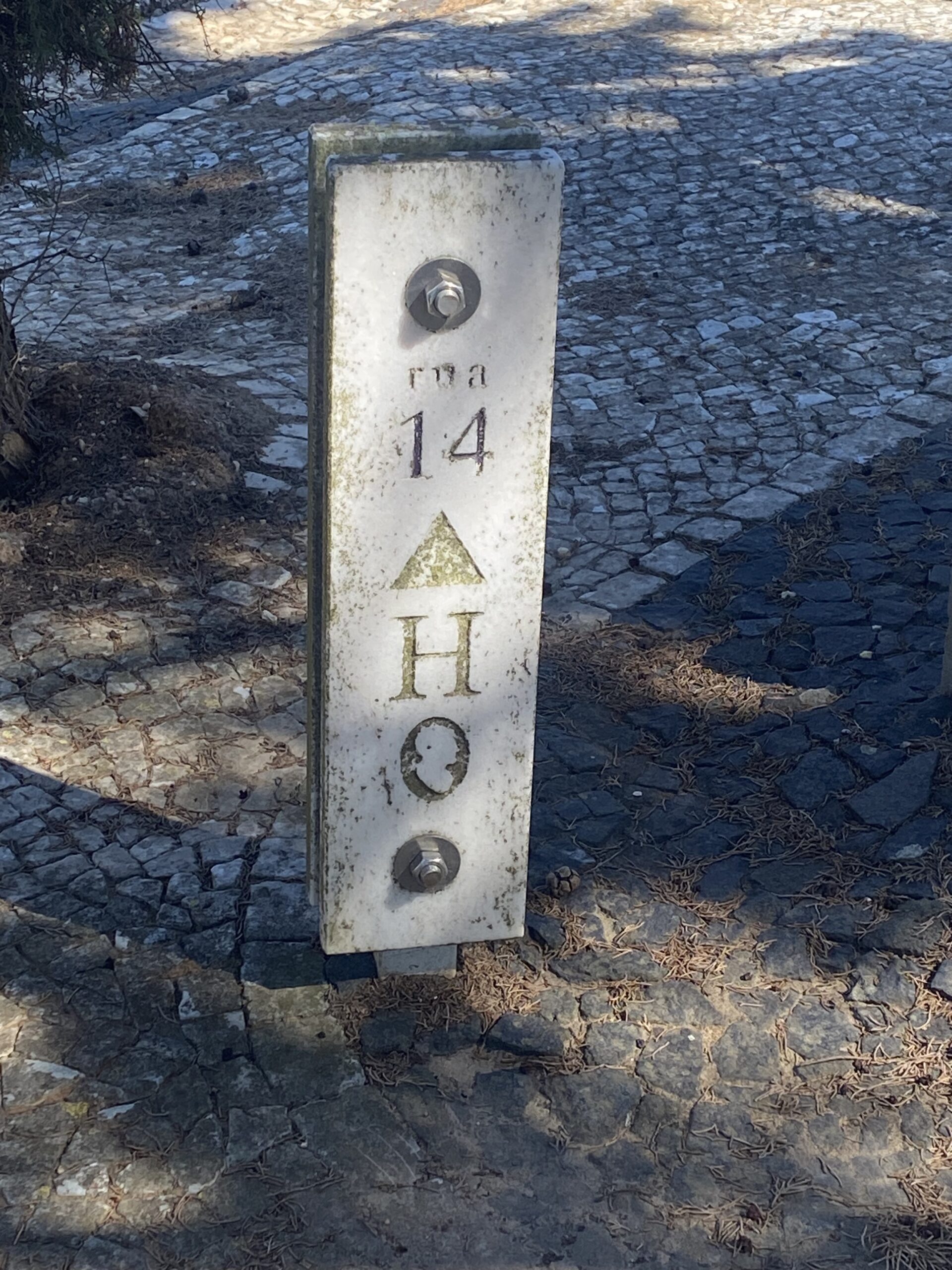
Another fascinating aspect of the cemetery is the glass front doors of many of the tombs. You can look inside many of them and see the stacked caskets, pictures, and alters inside. Many of the tombs are built to house the coffin at the bottom, and the top is decorated with a stone frame or a small chapel.
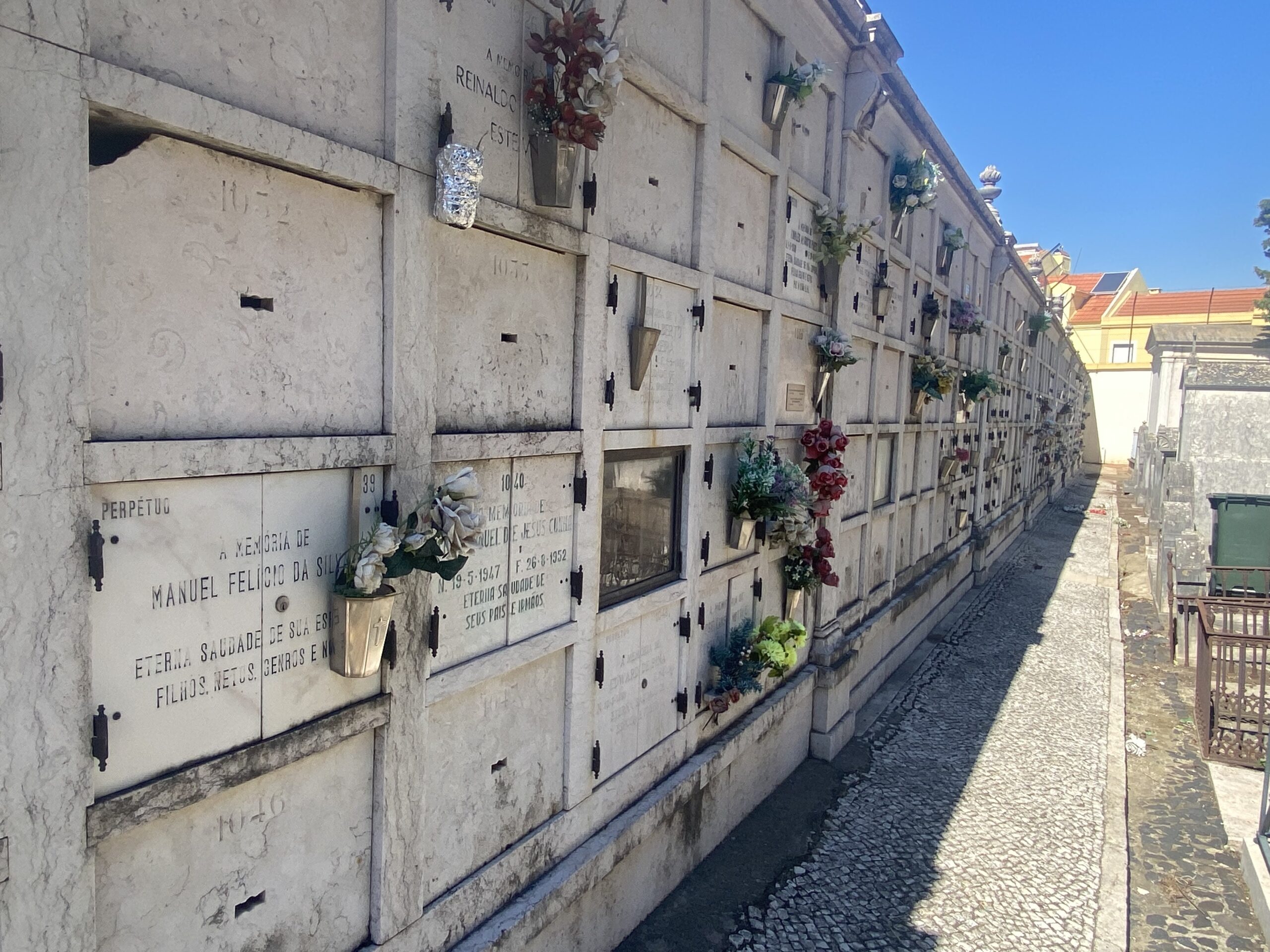
The most imposing mausoleum in the cemetery is also Europe’s largest private tomb. Built in 1849 on a two-acre plot, Pedro de Sousa Holstein, the Duke of Palmela, and his family are interred in a 40-foot-high pyramidal structure. The mausoleum has its own gated entrance and a separate cemetery in front of the pyramid, which contains a mausoleum and a crypt. The remains of 200 bodies are there. The Duke’s servants are buried outside in the plots in front of the pyramid.
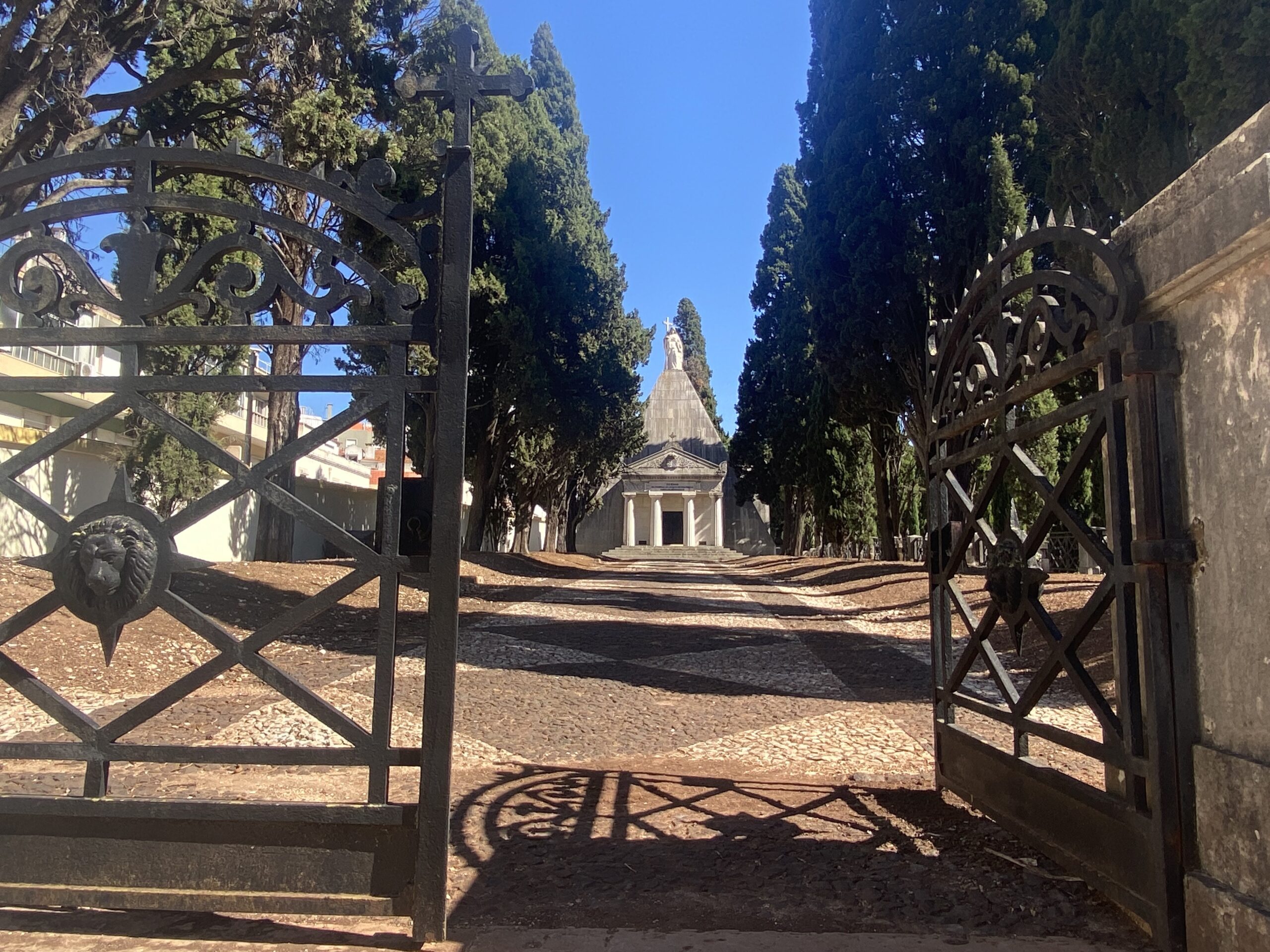
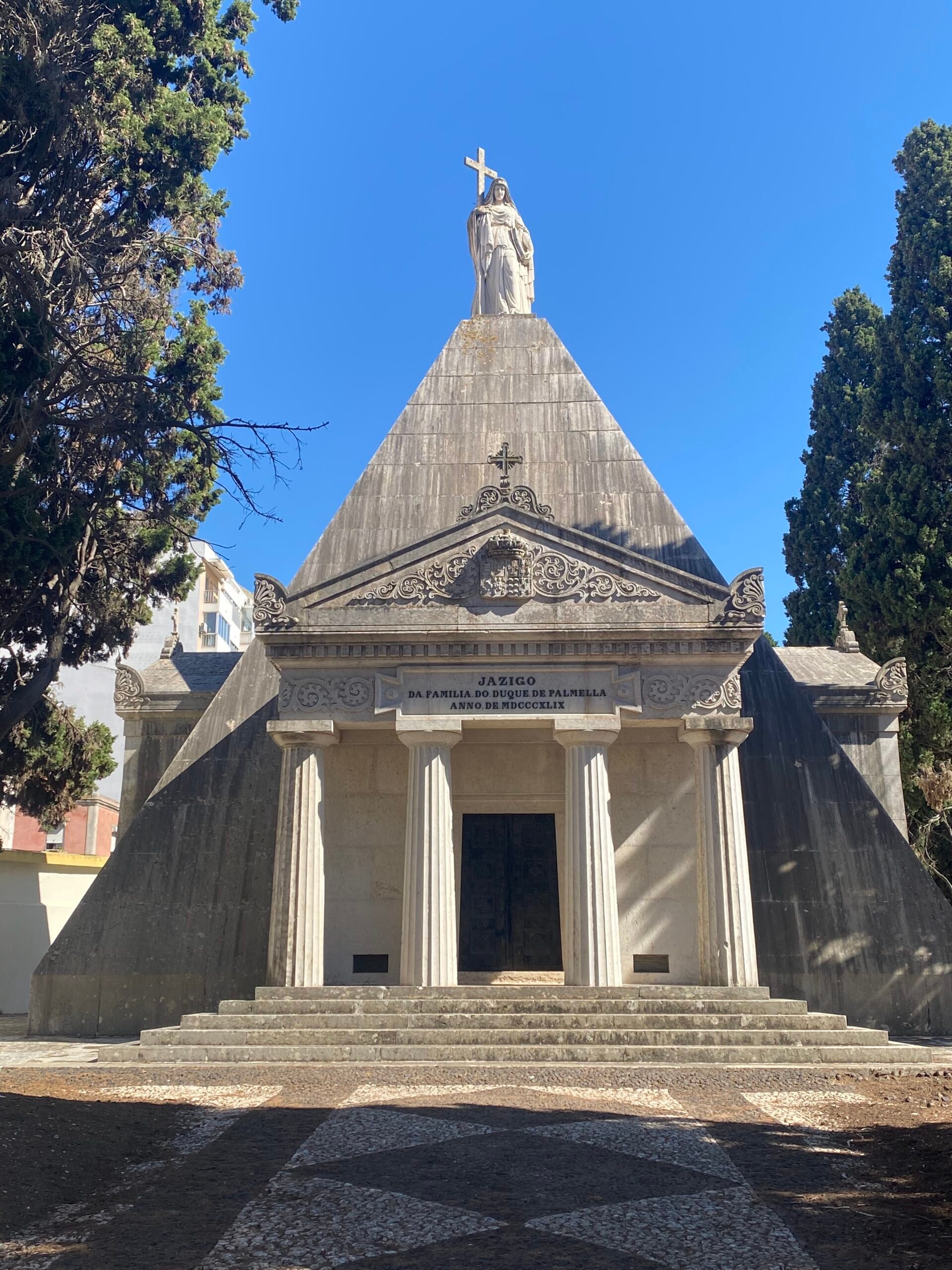
A Reflection of Life and Death
Visiting the Prazeres Cemetery can be a profound and moving experience. It’s a place where you can pay your respects to the notable and the ordinary, contemplate the beauty of art and architecture, and connect with the enduring spirit of a city that has faced adversity and emerged stronger. Apart from the sound of airplanes flying overhead (which the dead have yet to complain about), it is a beautiful, quiet place for reflection in a unique corner of Lisbon.
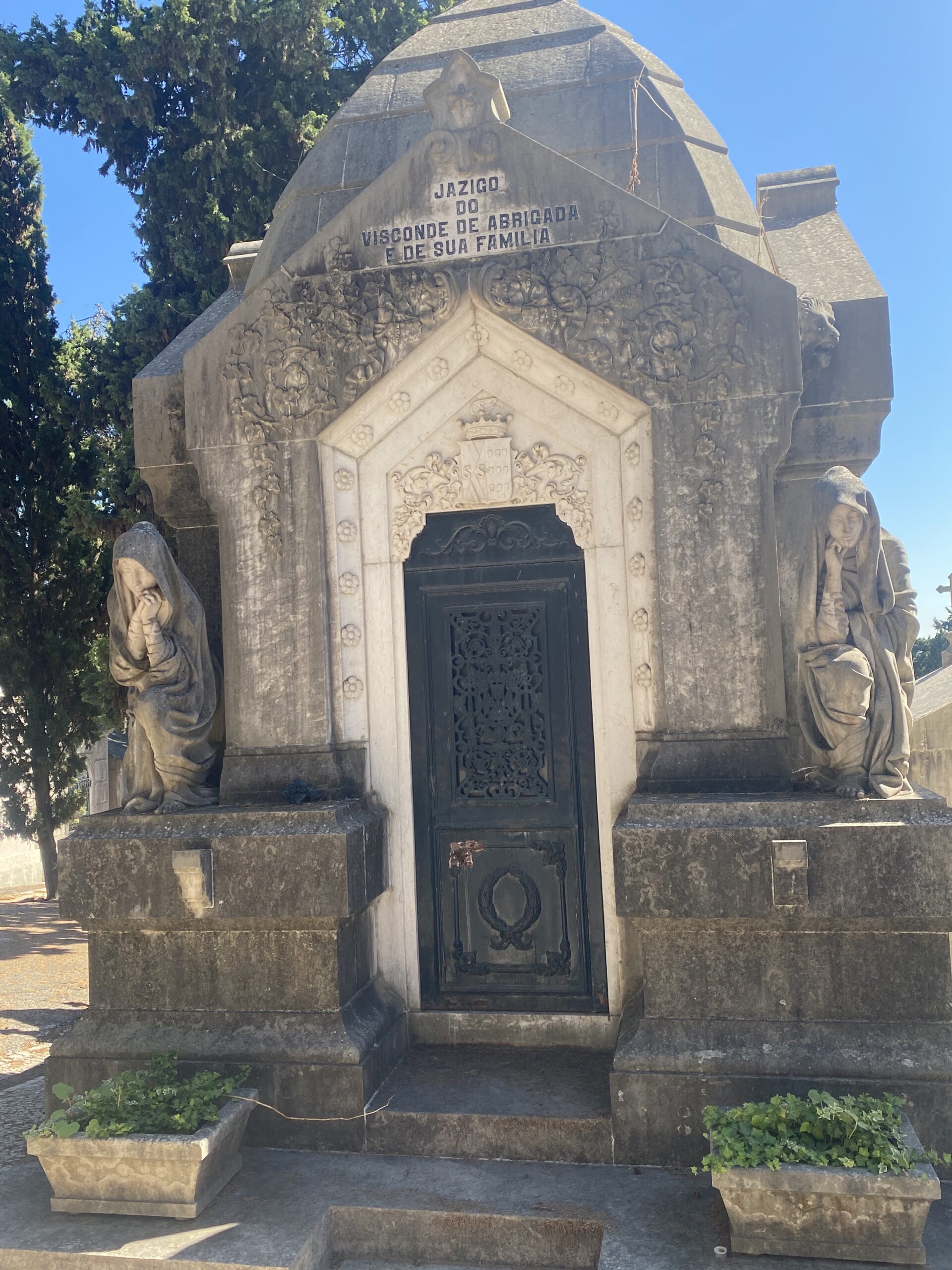
Location and Opening Hours
Prazeres Cemetery is conveniently located just at the western end of the Tram #28 line. If there is a long line for the next tram, take a short walk over to the cemetery and dive into the fascinating part of Lisbon’s history. There are restrooms at the entrance in case you need them.
Address: Praça São João Bosco 568, 1350-295
The cemetery is open from 9:00 a.m.–6:00 p.m. from May to September and 9:00 a.m.–5:00 p.m. from October to April. Please enter 30 minutes before the closing time.

